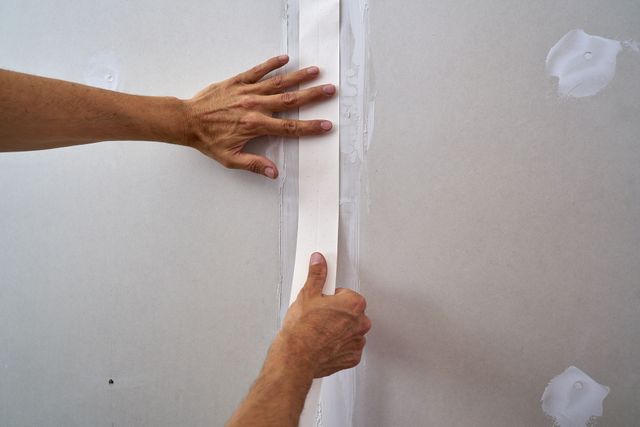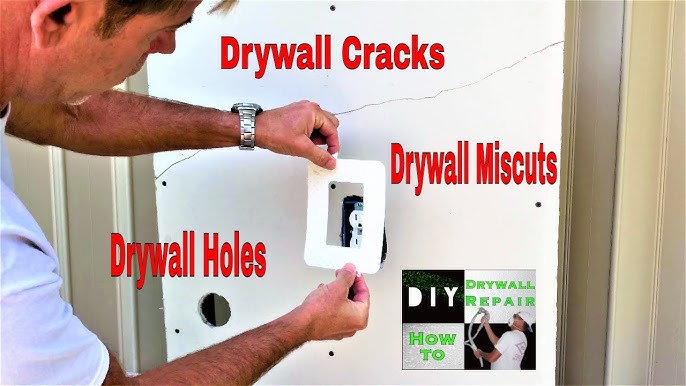Step-by-Step Approaches to Achieving Flawless Drywall Fixing and Setup
Attaining flawless drywall repair work and setup calls for an organized approach. It involves recognizing the various kinds of drywall and the tools required for the task. Appropriate area preparation is important before beginning any kind of job. Interior Painting. Each action, from covering openings to setting up new sheets, needs focus to detail. The process doesn't end with installation; finishing techniques are crucial for a polished look. The following steps will ensure a seamless result, but exactly what do they entail?
Understanding Drywall Kind and Devices Needed

The installation tools are similarly vital. An utility knife is important for reducing drywall sheets, while a drywall saw can aid in making precise cuts for fixtures or outlets. T-squares assure exact dimensions, and drywall screws or nails safeguard the panels to wall surface studs. In addition, a drywall lift can facilitate the installation of huge sheets, minimizing physical strain. Familiarity with these tools and types considerably adds to the efficiency and top quality of drywall tasks.
Preparing the Area for Repair Work or Installment
Preparing the area for drywall repair work or setup is important to guarantee a efficient and smooth process. Initially, the surrounding space should be cleared of furnishings and various other challenges to supply sufficient working area. This not only assures security however also protects against damage to belongings. Next off, it is essential to cover the flooring with ground cloth to catch any kind of particles or dust generated throughout the work.
Additionally, the wall surfaces must be checked for any loosened paint or wallpaper that might hinder adhesion. Eliminating these elements develops a clean surface area for the new drywall. Prior to start, it is recommended to switch off power to electric outlets or components in the location. Making sure ample lights in the work space will certainly further boost exposure and emphasis during the repair or setup process. Drywall Repair Ogden UT. By carefully preparing the location, one lays the groundwork for an effective drywall project
Step-by-Step Refine for Patching Holes

Covering openings in drywall calls for an organized strategy to assure a smooth repair work. The initial step involves reviewing the dimension of the opening. For small holes, a patching substance might be sufficient, while larger holes demand a spot. Next off, the broken location needs to be cleaned up and prepared by removing any loose debris.
For small openings, applying spackling compound with a putty blade is suggested, smoothing it over the hole and feathering the sides. When dry, fining sand the location ensures a smooth finish. For larger openings, a drywall patch should be reduced to size, positioned over the opening, and safeguarded with screws. After setting up the patch, the exact same spackling procedure is duplicated, adhered to by sanding.
The patched location needs to be topped and painted to match the surrounding wall. This precise procedure ensures an expert look and prolongs the lifespan of the repair work.
Installing New Drywall Sheets: A Comprehensive Overview
Installing brand-new drywall sheets requires mindful planning and execution to assure a aesthetically enticing and strong finish. The location should be determined properly to identify the number of sheets required. It is vital to select the appropriate thickness, generally 1/2-inch for indoor wall surfaces and 5/8-inch for ceilings or fire-rated applications.
Next, the studs or structure ought to be examined for any abnormalities, ensuring they are straightened and properly spaced. When putting the drywall sheets, they need to be positioned horizontally to decrease seams and improve architectural integrity. A drywall lift can be useful for overhead setups.
Attaching the sheets with drywall screws at appropriate intervals ensures a secure installation. It is very important to countersink the screws a little listed below the surface area to prepare for the completing process. Adhering to these standards will certainly lead to a solid foundation, prepared for the next actions in drywall completing.
Ending Up Touches: Insulation, Mudding, and Sanding Methods
When the drywall sheets are firmly attached, the emphasis changes to the complements that will certainly provide a polished appearance. This process starts with taping, using either paper or fiberglass mesh tape to cover the joints between sheets. The tape guarantees a smooth shift, reducing the risk of cracking. Following taping, mudding is vital; a joint substance is used over the tape to load voids and produce a seamless surface. Generally, several coats are necessary, each one feathery out better than the before decrease exposure.
After enough drying time, fining sand is the final action in achieving a flawless coating. A fine-grit sandpaper is made use of to smooth the dried substance, guaranteeing there are no imperfections or bumps. Interest to information during this stage is significant, as it substantially impacts the overall look of the wall surface. The end outcome should be an even, professional-looking surface area ready for priming and painting.
Often Asked Inquiries
How Do I Pick the Right Drywall Thickness for My Job?
To choose the right drywall density, consider the task's function, location, and architectural requirements. Criterion thicknesses consist of 1/2-inch for general usage and 5/8-inch for fire-rated applications, making sure sturdiness and conformity with building codes.

Can I Set Up Drywall Over Existing Drywall?
Yes, mounting drywall over existing drywall is possible. Nevertheless, it is vital to guarantee the underlying surface area is totally free and secure from damages. Appropriate attachment and factor to consider of density are crucial for an effective installment.
What Are the very best Practices for Drywall Disposal?
The very best methods for drywall disposal include recycling when possible, using regional waste administration services, and following guidelines for dangerous materials if applicable. Drywall Installation Ogden Utah. Correctly sealing and labeling waste guarantees conformity and security throughout disposal
How Long Should I Wait On Mud to Dry Before Sanding?
Typically, one must wait 24 hours for drywall mud to completely dry prior to fining sand. However, drying time can differ based upon humidity and temperature level, so checking for a firm structure is advisable before continuing.
Exist Eco-Friendly Drywall Options Available?
Yes, environmentally friendly drywall choices are offered. These alternatives often make use of recycled materials, low-VOC adhesives, and sustainable manufacturing techniques, decreasing ecological effect while check here giving effective insulation and resilience for different building and restoration tasks.
An utility blade is important for cutting drywall sheets, while a drywall saw can help in making exact cuts for electrical outlets or fixtures. Preparing the location for drywall repair or setup is crucial to ensure a smooth and effective process. Patching holes in drywall needs a systematic technique to guarantee a seamless fixing. Installing brand-new drywall sheets calls for cautious preparation and execution to guarantee a aesthetically appealing and durable finish. Yes, setting up drywall over existing drywall is feasible.